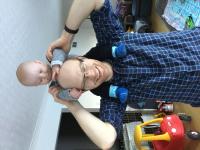Abstract
The objectives of this study were to provide an assessment of
photographic documentation of the wound from the patients'
perspective and to evaluate whether this could improve patients'
understanding of and involvement in their wound care. Our
results revealed that most patients visiting the wound care
clinic have difficult-to-see wounds (86\%). Only 20\% of
patients monitor their wounds and instead rely on clinic or
nurse visits to track the healing progress. There was a
significant association between patients' ability to see their
wound and their subsequent memory of the wound's appearance.
This was especially true for patients who had recently begun
visiting the wound care clinic. This relationship was not
present in patients who had visited the clinic for 3 or more
years. Patients reported that the inability to see their wounds
resulted in feeling a loss of autonomy. The majority of patients
reported that photographing their wounds would help them to
track the wound progress (81\%) and would afford them more
involvement in their own care (58\%). This study provides a
current representation of wound photography from the patients'
perspective and reveals that it can motivate patients to become
more involved in the management of their wounds - particularly
for patients with difficult-to-see wounds.
